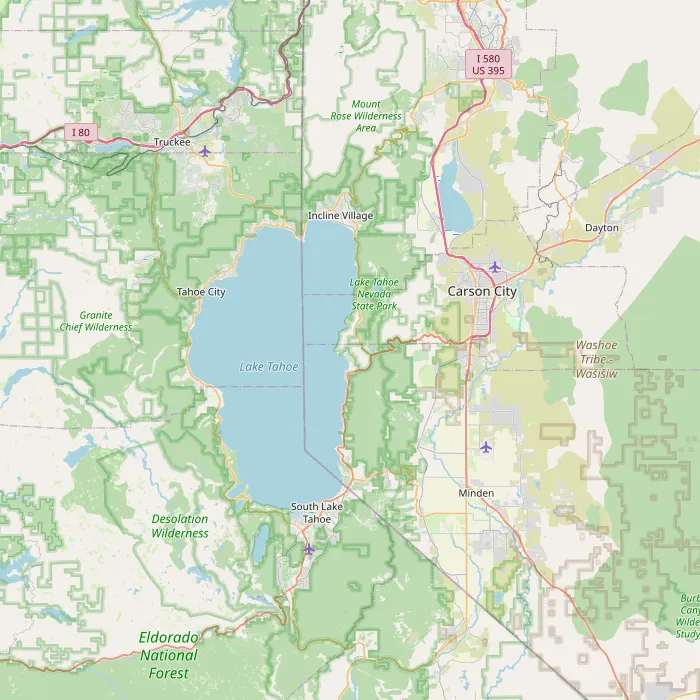Welcome, fellow explorers! As your guide from “Du lịch khắp thế gian,” I’m thrilled to delve into a place where the rhythms of nature deeply influence daily life and travel experiences: Carson City, Nevada. Often overshadowed by its glittering neighbor, Las Vegas, or the stunning beauty of nearby Lake Tahoe, Nevada’s capital city holds its own unique charm, heavily shaped by the distinct carson city nevada climate.
Understanding this climate isn’t just about packing the right clothes; it’s key to unlocking the best adventures, enjoying local culture, and appreciating the unique high desert environment where this historic city thrives. From scorching summer days giving way to cool nights to crisp autumn air perfect for hiking, and winters that can bring stunning snowfalls, the climate here offers a diverse palette of experiences throughout the year.
The High Desert Setting and the Carson City Nevada Climate
Carson City sits nestled in Eagle Valley on the eastern edge of the Sierra Nevada mountains. This specific geographic location, at an elevation of around 4,800 feet (approximately 1,460 meters), is the primary architect of the carson city nevada climate. It’s characterized as a semi-arid climate, meaning it’s relatively dry, receiving limited precipitation throughout the year.

This high-altitude, high-desert setting dictates significant temperature swings not just between seasons, but often within a single day – think warm, sunny afternoons followed by surprisingly cool evenings. This diurnal range is a hallmark of the region’s weather patterns. Proximity to the towering Sierra Nevada also plays a crucial role, influencing wind patterns and acting as a barrier that creates a rain shadow, contributing to the area’s dryness.
 Map showing locations contributing to weather data analysis near Carson City, Nevada
Map showing locations contributing to weather data analysis near Carson City, Nevada
Experiencing the Seasons in Carson City
The distinct four seasons are perhaps the most fascinating aspect of the carson city nevada climate. Each brings its own character, opportunities for activities, and specific considerations for visitors and residents.
Spring: A Period of Awakening and Mild Weather
Spring in Carson City, typically from March to May, is a transitional period that can be quite unpredictable. Early spring might still see lingering cold snaps and even late-season snow, especially in March. However, as the weeks progress, temperatures gradually warm up, days lengthen, and the landscape begins to shake off its winter dormancy.
What to Eat in Fort Worth – A Culinary Deep Dive
- Weather: Expect average high temperatures ranging from the 50s (°F) in March (around 10-15°C) climbing into the 60s and 70s (°F) by May (around 15-25°C). Nights remain cool, often dropping close to or below freezing in the early part of the season. Precipitation is moderate, often coming as rain showers, though snow is possible at higher elevations nearby. Sunshine becomes increasingly prevalent.
- Activities: Spring is a wonderful time for exploring the city’s historical sites without the summer heat. Hiking trails at lower elevations start to become accessible, and wildflowers can begin to bloom. It’s an excellent season for cycling the trails around the valley or enjoying a leisurely stroll through the historic downtown. The air is often crisp and clean.

Summer: Hot Days, Cool Nights, and Abundant Sunshine
Summer, from June through August, is the warmest and driest season under the carson city nevada climate. The days are long and filled with intense sunshine. While daytime temperatures can be quite high, the low humidity typical of the high desert makes the heat more manageable than in more humid climates. The most remarkable feature of summer here is the dramatic drop in temperature after sunset.
- Weather: Average high temperatures consistently reach the 80s and 90s (°F) (27-37°C), with occasional spikes above 100°F (38°C), particularly in July and August. Nights, however, cool down significantly, often into the 50s or 60s (°F) (10-20°C), providing a welcome respite. Rainfall is minimal, though late summer can sometimes bring monsoonal moisture resulting in brief, intense afternoon thunderstorms.
- Activities: This is peak season for accessing the nearby recreational paradise of Lake Tahoe for swimming, boating, and watersports. Within Carson City, summer is perfect for enjoying patios, outdoor events, and exploring state parks like Washoe Lake State Park. Early morning or late afternoon hikes are recommended to avoid the peak heat. Hydration is crucial during this season.
Autumn: Pleasant Warmth, Crisp Air, and Stunning Scenery
Many consider autumn (September to November) to be one of the most pleasant times to experience the carson city nevada climate. The intense heat of summer subsides, the air becomes drier and crisper, and the surrounding landscapes, particularly in the mountains, burst into vibrant fall colors.
- Weather: September often feels like a continuation of summer, with warm days in the 70s and 80s (°F) (20-30°C). Temperatures gradually cool through October and November, with average highs falling into the 50s and 60s (°F) (10-20°C). Nights become increasingly cold, regularly dropping below freezing in November. Precipitation is generally low, but the first dustings of snow on higher peaks signal the coming winter.
- Activities: Fall is ideal for scenic drives along the Sierra Nevada foothills, exploring apple orchards in nearby communities like Apple Hill, and hiking or biking in comfortable temperatures. The local historical sites and museums are particularly enjoyable in the crisp autumn air. Fall festivals and events are common.
Winter: Cold Temperatures and the Potential for Snow
Winter in Carson City, from December to February, is cold and brings the highest chance of precipitation, primarily in the form of snow. While snow accumulation within the city limits can vary year to year, the surrounding mountains, especially towards Lake Tahoe, receive significant snowfall, making the region a winter sports destination.
- Weather: Average high temperatures are typically in the 40s (°F) (around 5-10°C), with nights consistently falling below freezing, often into the teens or 20s (°F) (-5 to -10°C). Clear, sunny days are common even in winter, offering beautiful, crisp conditions. Snowfall is variable; some years see several inches accumulate in the city, while others see very little stick around. Storms moving over the Sierra Nevada can bring heavier snow events.
- Activities: Winter is the gateway to skiing, snowboarding, and snowshoeing opportunities just a short drive away at Lake Tahoe resorts. Within Carson City, it’s a time for exploring indoor attractions like the Nevada State Museum, enjoying cozy restaurants and cafes, and perhaps experiencing the unique quiet beauty of the high desert landscape under a blanket of snow. Road conditions can be hazardous during and immediately after snowstorms, particularly on mountain passes.
Planning Your Visit Based on the Carson City Nevada Climate
Understanding the nuances of the carson city nevada climate is crucial for planning your perfect trip.
- Best Time to Visit:
- For mild weather and outdoor activities like hiking and exploring: Late Spring (May-June) and Autumn (September-October) are often considered ideal.
- For accessing Lake Tahoe’s summer water activities: Summer (July-August).
- For winter sports: Winter (December-March), focusing on destinations closer to the mountains with reliable snow.
- What to Pack: Layers are essential year-round due to the significant day-night temperature swings. Even in summer, bring a jacket or sweater for the evenings. Sun protection (sunscreen, hats, sunglasses) is vital due to the high altitude and intense sunshine, regardless of the season. Bring appropriate footwear for hiking or exploring, and traction devices or snow boots if visiting in winter.
Beyond the Forecast: Climate and Lifestyle
The carson city nevada climate doesn’t just affect what you wear or do; it shapes the very pace of life in the city. The bright, sunny days encourage outdoor living, while the distinct seasons provide a natural rhythm to the year. It influences local agriculture (what grows well in a semi-arid, high-altitude environment), recreational opportunities, and even the design of buildings (considered for insulation against both heat and cold). The low humidity, while contributing to fire risk in the dry seasons, also means that hot temperatures can feel less oppressive than in humid regions, and cold temperatures less biting.
The resilience required to thrive in a place with such climatic variations is woven into the character of the community. From preparing for winter snows to managing water resources in a dry region, the climate is a constant backdrop to life here.
Frequently Asked Questions About the Carson City Nevada Climate
- Does it snow much in Carson City? While the surrounding mountains get significant snowfall, accumulation within the city limits varies greatly year to year. It does snow, but it often melts quickly, especially on roads and sunny areas. Heavy snow events that disrupt the city are less frequent than in nearby mountain towns.
- How hot does it get in the summer? Daytime temperatures in July and August often reach the 90s (°F) (30s °C) and can exceed 100°F (38°C). However, the low humidity makes the heat feel less intense than in humid climates, and evenings cool down considerably.
- Is Carson City windy? Yes, due to its location in a valley near the mountains, Carson City can experience windy conditions, particularly in the spring and fall.
- Is the climate suitable for people with allergies? This depends on the specific allergies. The dry, windy conditions can exacerbate pollen allergies at certain times of the year.
- What’s the driest time of year? Summer is typically the driest season in terms of total precipitation, although wildfire risk is highest then due to accumulated dryness from preceding months.
Conclusion: A Climate of Variety and Opportunity
The carson city nevada climate offers a fascinating blend of high desert dryness, mountain influences, and distinct seasonal changes. It presents challenges, certainly, but more importantly, it provides a backdrop for a wide array of experiences, from shredding slopes near Tahoe in winter to exploring sun-drenched historical sites in summer.
Understanding this climate allows you to appreciate the unique environment of Nevada’s capital and plan a visit that aligns perfectly with your interests and preferred weather. Whether you seek snowy adventures, vibrant fall colors, comfortable spring hikes, or sunny summer days, Carson City’s climate ensures there’s a season for every kind of explorer. So, pack your bags thoughtfully and get ready to experience the dynamic weather patterns that shape this captivating corner of the American West.
